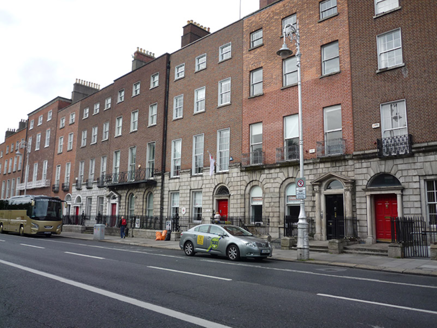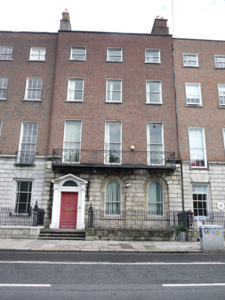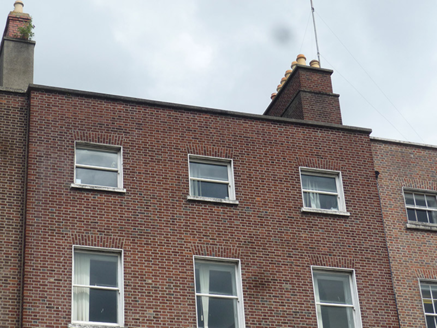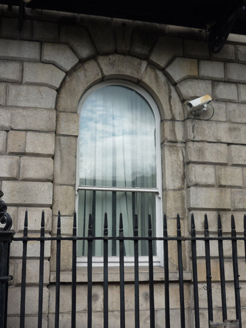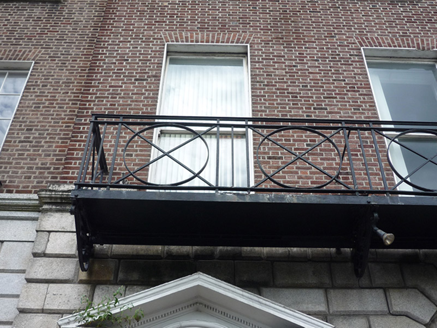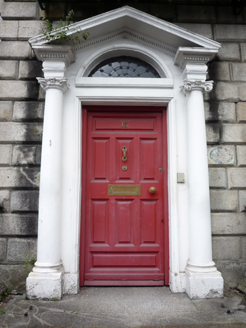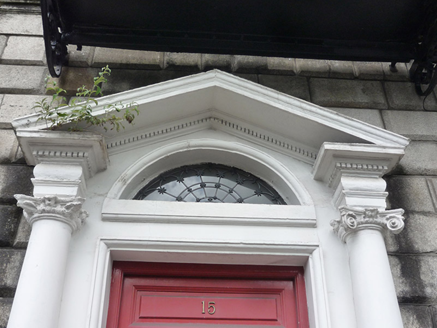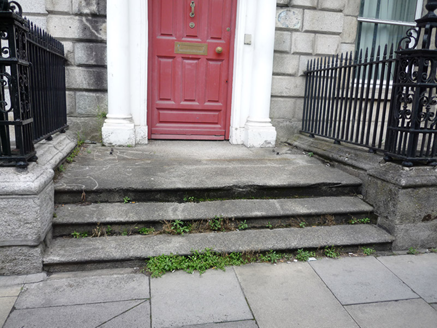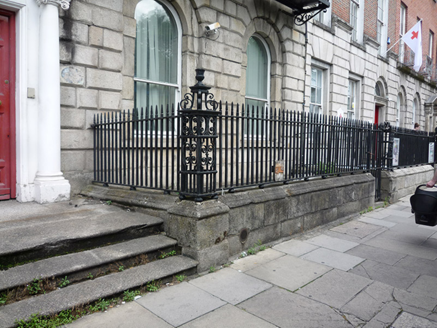Survey Data
Reg No
50100362
Rating
Regional
Categories of Special Interest
Architectural, Artistic
Original Use
House
In Use As
Office
Date
1765 - 1770
Coordinates
316700, 233663
Date Recorded
29/07/2016
Date Updated
--/--/--
Description
Attached three-bay four-storey former house over basement, built c. 1765, having one and two-storey additions to rear with projection at second floor level to west bay. Now in use as offices. Pitched slate roof to front part, behind brown brick parapet with granite coping, and rear part comprising hipped lean-to roof to west and hipped roof to east. Shouldered brown brick chimneystacks to east with clay pots, and concealed rainwater goods. Flemish bond brown brick walls over granite stringcourse above first floor sill level, rusticated granite walls to ground floor, and painted rendered walls to basement, rear and additions. Round-headed window openings to ground floor with channelled granite surrounds; square-headed openings elsewhere, diminishing in height to upper floors, with painted rendered reveals and granite sills, having one-over-one pane timber sliding sash windows. Continuous cast-iron balcony to first floor, and replacement iron grilles to basement. Apparently timber sash windows to rear, with round-headed stairs window. Round-headed door opening with painted rendered linings, freestanding Scamozzian Ionic columns, open-bed pediment, dentils, ovolo-moulded architrave and eight-panel timber door with brass furniture. Granite platform with three bull-nosed steps. Wrought-iron railings enclosing basement area with decorative wrought and cast-iron corner posts on moulded granite plinth wall. Double-leaf timber panelled and glazed doors to basement with overlight. Casey (2005) states that interior has 'standard joinery and cornices of the 1760s and nineteenth-century subdivisions to first floor'. Building set forward of adjoining buildings. Rear of plot has garden to middle part and remains of later buildings to rearmost part. Rubble stone boundary wall to lane, with recent pedestrian and vehicular doorways, and earlier doorway having fluted pilasters with moulded bases and capitals supporting moulded open-bed pediment, with square-headed timber panelled door.
Appraisal
Built for Ralph Ward and unusual in having round-headed ground floor windows. The otherwise restrained brick façade is enlivened by its Adamesque door surround and decorative fanlight, as well as its rusticated granite ground floor and decorative railings and balconette. It makes a strong contribution to the early character of Merrion Square, and its rear boundary has an interesting pedimented doorway. It was built as part of the original development of the Georgian square. Laid out as part of the Fitzwilliam Estate, Merrion Square is one of the best-preserved Georgian streetscapes in Ireland. The north, east and south sides of the square are lined with terraced houses of eighteenth and nineteenth-century date, while the west side is terminated by the garden front of Leinster House. The houses maintain a relatively uniform building height and design, attributed to standards promoted in Fitzwilliam's leases. Individuality was introduced through the design of doorcases, ironwork and interior decorative schemes.
